Advertisements
Chapters
1.1: Walk a little slower
1.2: The Fun they Had
1.3: ‘Hope’ is the thing with feathers
▶ 1.4: The Story of Tea
1.5: The Necklace
UNIT TWO
2.1: Comparisons
2.2: Helen Keller and Anne Sullivan
2.3: Mark Twain
2.4: Please Listen!
2.5: A Play
UNIT THREE
3.1: Coromandel Fishers
3.2: The Fall of Troy
3.3: To a Butterfly
3.4: Think Before You Speak !
3.5: Great Scientists
UNIT FOUR
4.1: What is Success ?
4.2: Reading Works of Art
4.3: Silver
4.4: The Tempest
4.5: The Last Lesson
Chapter *: Language Study
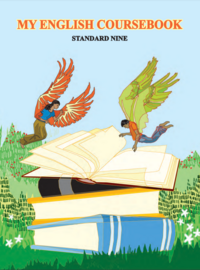
Advertisements
Solutions for Chapter 1.4: The Story of Tea
Below listed, you can find solutions for Chapter 1.4 of Maharashtra State Board Balbharati for My English Coursebook 9 Standard Maharashtra State Board.
Balbharati solutions for My English Coursebook 9 Standard Maharashtra State Board 1.4 The Story of Tea Warming up! [Page 17]
Chit-Chat
- Can you make tea?
- How do you make tea?
- What brand do you like?
- At home, who makes tea/coffee for everybody?
- Have you seen a tea-plantation? What was it like?
Write the names of as many beverages as you can within two minutes. What do the following beverages remind you of? Draw word webs to show your associations.
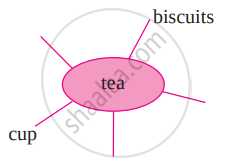 |
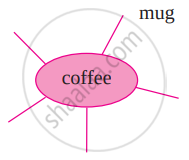 |
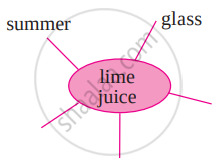 |
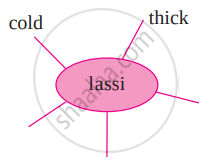 |
 |
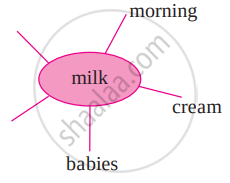 |
Balbharati solutions for My English Coursebook 9 Standard Maharashtra State Board 1.4 The Story of Tea Intext question [Pages 17 - 21]
Form pairs and write the process of making tea in a step-by-step manner.
How is tea, the beverage, made?
How is tea, that is packed and sold to us, made?
Where are tea estates located?
Why are tea plants pruned?
What are botanical names? How are they decided?
What does tea contain? What does it not contain?
Who was Emperor Shennong?
Why did he carry out further investigations about tea?
How did tea reach other parts of the world?
What is the difference between legends or stories and history?
Can you guess the origin of the Marathi word ‘chaha’?
The paragraph about how tea came to India brings out the difference between history based on oral sources and ‘recorded history’. Discuss how the author brings it out.
What is the difference between ‘claim’ and ‘fact’?
Do you have any ceremonies associated with food items?
What are the good qualities of tea?
Why are the cups only half-filled in Chinese tea ceremonies?
Make a bilingual glossary of the various spices used in the kitchen.
Balbharati solutions for My English Coursebook 9 Standard Maharashtra State Board 1.4 The Story of Tea ENGLISH WORKSHOP [Page 22]
List all the names of Geographical places mentioned in the (The Story of Tea) passage.
Make smaller words using the letters in the given word. (At least 5 words)
actually
Make smaller words using the letters in the given word. (At least 5 words)
refreshing
Make smaller words using the letters in the given word. (At least 5 words)
immediately
Make smaller words using the letters in the given word. (At least 5 words)
investigations
Make smaller words using the letters in the given word. (At least 5 words)
meditation
Make smaller words using the letters in the given word. (At least 5 words)
enjoyable
Make smaller words using the letters in the given word. (At least 5 words)
loneliness
Make smaller words using the letters in the given word. (At least 5 words)
friendship
From the (The Story of Tea) passage, copy correctly any three sentences that begin with ‘How’.
Find the meaning of the following from a good dictionary:
infusion
Find the meaning of the following from a good dictionary:
restorative
Find the meaning of the following from a good dictionary:
inscriptions
Find the meaning of the following from a good dictionary:
radicals
Find the meaning of the following from a good dictionary:
connoisseurs
List the words related to agriculture from the (The Story of Tea) passage.
List the words related to chemistry from the (The Story of Tea) passage.
Complete the following sentence with the help of the (The Story of Tea) passage:
Camellia sinensis is an evergreen plant that grows in ______.
Complete the following sentence with the help of the (The Story of Tea) passage:
The teas we buy are usually classified according to ______.
Complete the following sentence with the help of the (The Story of Tea) passage:
In many countries around the world, tea drinking is an ______.
Complete the following sentence with the help of the (The Story of Tea) passage:
Our body produces chemicals called ______.
Prepare a flow chart to show the growth and journey of tea from the plantation to our homes. Use information from the lesson.

From the (The Story of Tea) passage, find all the words or pairs of words that begin with ‘tea’. Examples: teapot, tea plants.
Underline the infinitive in the following sentence.
It was funny to read words that stood still.
Underline the infinitive in the following sentence.
To be or not to be - that is the question.
Underline the infinitive in the following sentence.
Can I read the book?
Underline the infinitive in the following sentence.
They could help one another with the homework and talk about it.
Solutions for 1.4: The Story of Tea

Balbharati solutions for My English Coursebook 9 Standard Maharashtra State Board chapter 1.4 - The Story of Tea
Shaalaa.com has the Maharashtra State Board Mathematics My English Coursebook 9 Standard Maharashtra State Board Maharashtra State Board solutions in a manner that help students grasp basic concepts better and faster. The detailed, step-by-step solutions will help you understand the concepts better and clarify any confusion. Balbharati solutions for Mathematics My English Coursebook 9 Standard Maharashtra State Board Maharashtra State Board 1.4 (The Story of Tea) include all questions with answers and detailed explanations. This will clear students' doubts about questions and improve their application skills while preparing for board exams.
Further, we at Shaalaa.com provide such solutions so students can prepare for written exams. Balbharati textbook solutions can be a core help for self-study and provide excellent self-help guidance for students.
Concepts covered in My English Coursebook 9 Standard Maharashtra State Board chapter 1.4 The Story of Tea are The Story of Tea, Grammar, Writing Skills, Reading Skills, Unseen Passage Comprehension, Unseen Poem Comprehension.
Using Balbharati My English Coursebook 9 Standard Maharashtra State Board solutions The Story of Tea exercise by students is an easy way to prepare for the exams, as they involve solutions arranged chapter-wise and also page-wise. The questions involved in Balbharati Solutions are essential questions that can be asked in the final exam. Maximum Maharashtra State Board My English Coursebook 9 Standard Maharashtra State Board students prefer Balbharati Textbook Solutions to score more in exams.
Get the free view of Chapter 1.4, The Story of Tea My English Coursebook 9 Standard Maharashtra State Board additional questions for Mathematics My English Coursebook 9 Standard Maharashtra State Board Maharashtra State Board, and you can use Shaalaa.com to keep it handy for your exam preparation.
